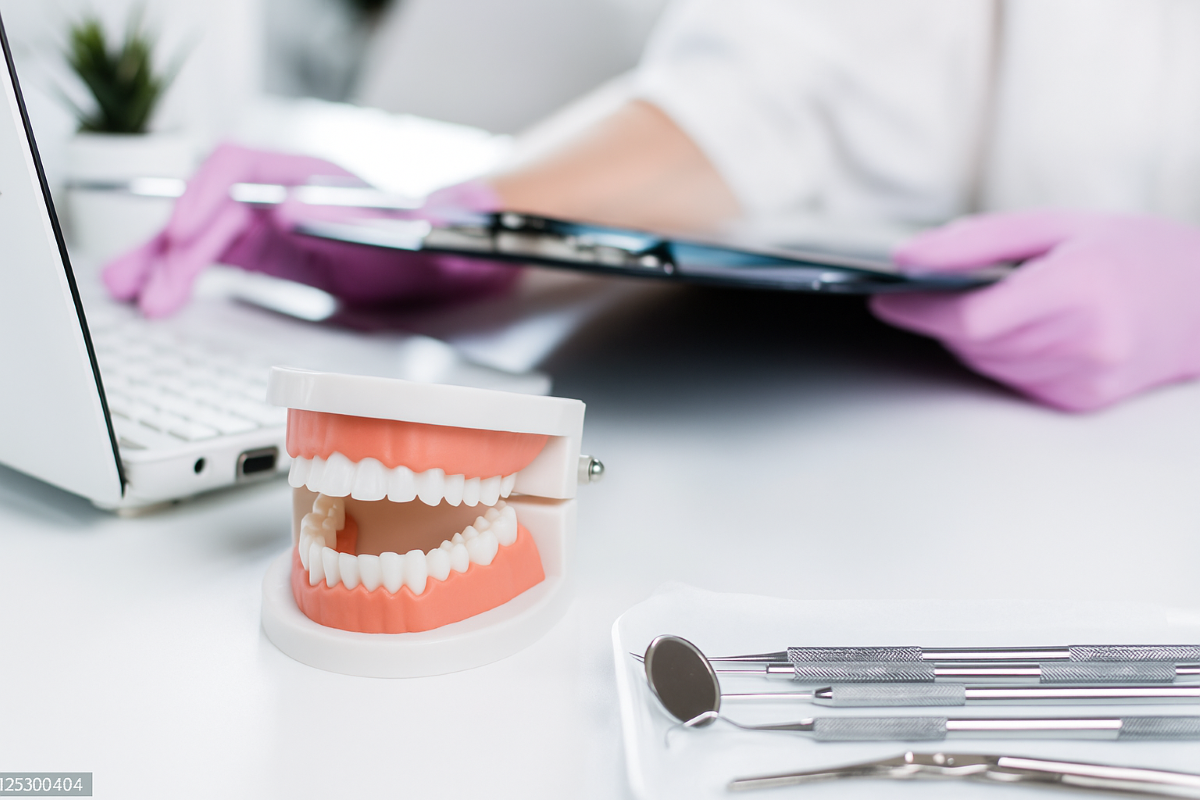Key Highlights
AI receptionists can handle up to 35% of missed calls, a common issue for dental practices.
These AI solutions integrate with practice management systems, streamlining scheduling and patient information.
Features like appointment reminders and insurance verification enhance efficiency and patient experience.
AI receptionists are available 24/7, providing continuous support for patient inquiries.
By automating tasks, AI allows staff to focus on more complex and patient-centric duties.
Introduction
In the busy field of dentistry, providing great patient care and running a hectic practice means you need smooth operations. This is where AI comes in to help. It streamlines tasks, improves communication, and boosts the patient experience. By using an AI receptionist in your dental practice, you are accepting a future where technology works together with personal care.
Revolutionizing Patient Interaction with AI
An AI receptionist is more than just a tech upgrade. It changes how dental offices connect with their patients. Picture a system that welcomes every patient with warmth and efficiency, no matter the time or how many calls are coming in. AI makes this happen. It allows your staff to focus on their work, ensuring that no patient question is left unanswered.
The AI receptionist can answer simple questions about your office hours and book appointments easily. It works seamlessly with your team, providing steady and dependable support every time.
Enhancing the First Point of Contact
When a patient calls your practice, it starts their whole experience. With an AI receptionist, the first contact is made by a smart and friendly AI agent. This agent can provide quick and correct information. Patients can ask general questions, learn about your services, and book appointments—no waiting for a receptionist to help.
Using AI makes the first interaction better. It gets rid of busy signals, long hold times, and the hassle of phone tag. This gives patients a great and smooth experience, which helps build a good relationship with the practice.
Also, the AI can answer common questions, give directions to the dental clinic, and even collect basic patient information. It works well with your current phone system, making everything easier.
Streamlining Appointment Scheduling
Managing appointments can take a lot of time for any dental office. An AI-powered system can work well with your current scheduling software. It makes it easy for patients to book, change, or cancel their appointments anytime, 24/7. Here’s how AI improves the appointment process:
Automated Appointment Reminders: Send reminders through text messages or email to cut down on no-shows and keep your schedule filled.
Intelligent Booking: The AI receptionist can check your practice management system in real-time. It can suggest appointment times that fit both patient choices and staff schedules.
Seamless Confirmation and Follow-up: AI helps confirm appointments quickly and sends follow-up instructions after visits. This helps make the patient experience smooth and connected.
The Technology Behind AI Dental Receptionists
The magic of an AI dental receptionist is in how it can act like a human using advanced technology. It uses Natural Language Processing (NLP) and Machine Learning (ML) to understand and answer patient questions like a real conversation.
This smart technology means AI receptionists can do more than just repeat pre-set answers. They learn from past talks. They can adjust to different ways of speaking. They can even guess what patients need, making them smarter and better over time.
Understanding Natural Language Processing
NLP helps an AI dental receptionist understand and talk to patients better. With NLP, the AI can look at text and voice data. It then figures out what people really mean and answers in a way that feels natural.
You can think of it as training the AI to not just listen to words but to grasp their meaning and intent. This skill is key for handling tricky requests, picking up on feelings (like urgency in a patient's voice), and adjusting to various dialects or accents.
The Role of Machine Learning
Machine Learning improves how NLP works by helping AI get better over time. With ML, the AI receptionist can look at a lot of data from past patient interactions. It can spot patterns, learn from what it sees, and get better at its responses.
This ongoing learning helps the AI make more accurate guesses, handle tasks more efficiently, and answer a mix of patient questions better. The more the AI interacts, the smarter and more human-like the conversations get.
Implementing AI Receptionists in Your Practice
Integrating an AI receptionist into your practice may feel difficult at first, but it is made to be easy and straightforward. The purpose is not to take the place of your team. Instead, it helps them with good tools to focus more on patient care. Most AI solutions can work well with your current practice management software. This way, you can have a smooth switch without disturbing your workflow.
Successful use of this technology goes beyond just using it. You also need to train your staff to use it well. This means they should learn how to access and understand data, deal with possible problems, and make the most of the AI's features.
Integration with Existing Systems
A crucial aspect of incorporating an AI receptionist into your practice is ensuring its compatibility with your existing setup:
Feature | Description |
|---|---|
Practice Management System (PMS) Integration | Seamless integration with popular PMS systems such as Eaglesoft, Dentrix, Open Dental, and others ensures efficient data flow for scheduling, billing, and patient records. |
HIPAA Compliance | AI receptionists prioritize data privacy and adhere to HIPAA regulations to protect sensitive patient information. Secure data encryption and access controls are paramount. |
Customization and Branding | Tailor the AI's communication style, language preferences, and appointment types to align with your practice's brand identity and patient demographics. |
Training Staff for a Smooth Transition
To smoothly start using an AI dental receptionist, you need to train your staff well. Teach them what the AI agent can do, like handling phone calls, managing appointments, and answering patient questions easily. Make sure they learn to use the AI receptionist along with your current systems, such as Eaglesoft, to improve practice management. It's also important to keep patient care standards high during their interactions with the AI system so you stay HIPAA compliant. Provide hands-on training sessions for your team. This will help them practice how to handle different situations, like emergency calls and questions about patient information, with the AI receptionist.
Measuring the Impact of AI Receptionists
The success of new technology depends on how well it works. For AI receptionists, the benefits include happier patients, better efficiency, and more profit for your practice.
You can measure the effect of AI by looking at important factors like appointment booking rates, how long patients wait on the phone, and feedback from surveys. This number-based method shows the value of your investment and helps you find ways to use it better in your practice.
Improvements in Patient Satisfaction
In today's digital world, patients want things to be easy and quick. AI receptionists help meet these needs:
Reduced Wait Times: AI makes sure calls get answered fast, which stops the annoyance of spending a lot of time waiting. This improves the patient experience right from the start.
24/7 Availability: Patients can get information, book appointments, or ask questions whenever they want, even when offices are closed. This makes things more convenient and satisfying.
Personalized Communication: AI receptionists can be set up to call patients by name, remember what they like, and speak in a friendly way. This makes the patient experience feel more personal and engaging.
Efficiency Gains and Cost Savings
By using AI receptionists to automate admin tasks, your staff can concentrate more on complex patient needs. This can help save money in the long run:
Increased Call Capacity: You can take more calls without needing to hire extra staff. This means potential patients won't encounter busy signals, and you won’t miss chances for new appointments.
Reduced Administrative Burden: With automation for things like appointment scheduling, reminders, and insurance checks, your staff can spend more time on patient interactions and other important work.
Streamlined Practice Management: AI gives helpful data about patient behavior, appointment trends, and how well the practice is doing, which helps make better decisions for more efficiency and growth.
Conclusion
In conclusion, AI dental receptionists are changing how patients experience dental care. They offer quick and personal interactions. By using natural language processing and machine learning, they improve how appointments are scheduled and enhance the initial contact with patients. Adding AI receptionists to your practice can boost patient satisfaction, improve efficiency, and save costs. By adopting this technology, dental practices can change the way they care for patients and make their operations smoother. Embrace the future of dental reception with AI solutions that improve service quality in your practice.
Frequently Asked Questions
How does an AI receptionist handle emergency calls?
An AI receptionist can be set up to find keywords about dental emergencies. If a caller talks about an urgent problem, the AI will quickly give the dentist's emergency contact info or directions to the closest emergency dental clinic. This way, patients get help right away.




